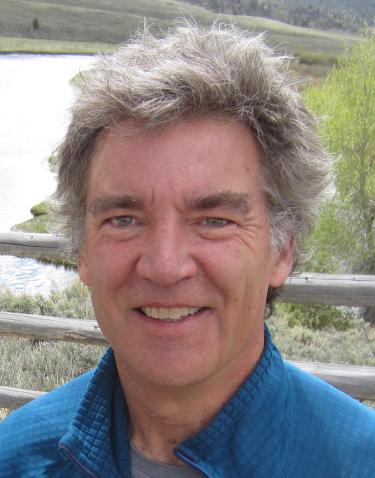
Professor
Environmental Engineering
Office: SEEC S286B
Education:
- PhD, Civil and Environmental Engineering, Massachusetts Institute of Technology, 1992
- MS, Civil and Environmental Engineering, Massachusetts Institute of Technology, 1988
- BS, Geological Engineering, Princeton University, 1983
Honors and Distinctions:
- Pacesetter Award; Science, Medicine, and Health, Boulder Daily Camera, 2008
- U.S. E.P.A. National Notable Achievement Award, Member of the Lefthand Watershed Revitalization Team, 2006
Professional Affiliations:
- American Geophysical Union
- American Chemical Society
- Association of Environmental Engineering and Science Professors
Interests:
- Fate and transport of contaminants in natural waters
Latest Publications:
- Lackey G., Pfander I., Gardiner J., Sherwood O.A., Rajaram H., Ryan J.N., Dilmore R.M., and Thomas B. (2022) Composition and origin of surface casing fluids in a major US oil- and gas-producing region. Environmental Science & Technology, doi:10.1021/acs.est.2c05239.
- Miller K.D., Bentley M.J., Ryan J.N., Linden K.G., Larison C., Kienzle B.A., Katz L.E,, Wilson A.M., Cox J.T., Kurup P., Van Allsburg K.M., McCall J., Macknick J.E., Talmadge M.S., Miara A., Sitterley K.A., Evans A., Thirumaran K., Malhotra M., Garcia S., Stokes-Draut J.R., and Chellam S., 2021. Mine water use, treatment, and reuse in the United States: A look at current industry practices and select case studies. ACS Environmental Science & Technology Engineering, doi:10.1021/acsestengg.1c00244.
- DiGiulio D.C., Rossi R.J., Jaeger J.M., Shonkoff S.B.C., and Ryan J.N., 2021. Vulnerability of groundwater resources underlying unlined produced water ponds in the Tulare Basin of the San Joaquin Valley, California. Environmental Science & Technology, doi:10.1021/acs.est.1c02056.
- Lackey G., Rajaram H., Sherwood O.A., Ryan J.N., Bromhal G., and Dilmore R.M., 2021. Public data from three US states provides new insights into well integrity. Proceedings of the National Academy of Sciences 118(14), e2013894118; doi:10.1073/pnas.2013894118.
- Stanish L.F., Sherwood O.A., Lackey G., Osborn S.G., Robertson C.E., Harris J.K., Pace N., and Ryan J.N., 2020. Microbial and biogeochemical indicators of methane in groundwater aquifers of the Denver Basin, Colorado. Environmental Science & Technology; doi:10.1021/acs.est.0c04228.
- Poulin B.A., Ryan J.N., Tate M.T., Krabbenhoft D.P., Hines M.E., Barkay T., Schaefer J., and Aiken G.R., 2019. Geochemical factors controlling dissolved elemental mercury and methylmercury formation in Alaskan wetlands of varying trophic state. Environmental Science & Technology 53(11), 6203-6213; doi:10.1021/acs.est.8b06041.
- Rogers J.D., Thurman E.M., Ferrer I., Rosenblum J.S., Evans M.V., Mouser P.J., and Ryan J.N., 2019. Degradation of polyethylene glycols and polypropylene glycols in microcosms simulating a spill of produced water in shallow groundwater. Environmental Science: Processes and Impacts 21, 256-268; doi:10.1039/C8EM00291F.
- Entrekin S., Trainor A., Saiers J., Patterson L., Maloney K., Fargione J., Kiesecker J., Baruch-Mordo S., Konschnik K., Wiseman H., Nicot J.-P., and Ryan J.N., 2018. Water stress from high-volume hydraulic fracturing potentially threatens aquatic biodiversity and ecosystem services in Arkansas, U.S.A. Environmental Science & Technology 52(4), 2349–2358; doi:10.1021/acs.est.7b03304.
- Barrett P.M., Hull E.A., King C.E., Burkart K., Ott K.A., Ryan J.N., Gawel J.E., and Neumann R.B., 2018. Increased exposure of plankton to arsenic in contaminated weakly-stratified lakes. Science of the Total Environment 625, 1606-1614; doi:10.1016/j.scitotenv.2017.12.336.
- Poulin B.A., Gerbig C.A., Kim C.S., Stegemeier J.P., Ryan J.N., and Aiken G.R., 2017. Effects of sulfide concentration and dissolved organic matter characteristics on the structure of nanocolloidal metacinnabar. Environmental Science & Technology 51(22), 13133-13142; doi:10.1021/acs.est.7b02687.
- Rogers J.D., Ferrer I., Tummings S.S., Bielefeldt A.R., and Ryan J.N., 2017. Inhibition of biodegradation of hydraulic fracturing compounds by glutaraldehyde: Groundwater column and microcosm experiments. Environmental Science & Technology 51(17), 10251-10261.
- Poulin B.A., Ryan J.N., Nagy K.L., Stubbins A., Dittmar T., Orem W., Krabbenhoft D.P., and Aiken G.R., 2017. Spatial dependence of reduced sulfur in Everglades dissolved organic matter controlled by sulfate enrichment. Environmental Science & Technology 51(7), 3630-3639.
- Sherwood O.A., Rogers J.D., Lackey G., Burke T.L., Osborn S.G., and Ryan J.N., 2016. Groundwater methane in relation to oil and gas development and shallow coal seams in the Denver-Julesburg Basin of Colorado. Proceedings of the National Academy of Sciences 113(30), 8391-8396.
- Mohanty S.K., Saiers J.E., and Ryan J.N., 2016. Colloid mobilization in a fractured soil: Effect of pore water exchange between preferential flow paths and soil matrix. Environmental Science & Technology 50(5), 2310-2317.
- Webster J.P., Kane T.J., Obrist D., Ryan J.N., and Aiken G.R., 2016. Estimating mercury emissions resulting from wildfire in the western United States. Science of the Total Environment 568, 578-586.
- Mohanty S.K., Saiers J.E., and Ryan J.N., 2015. Colloid mobilization in a fractured soil during dry-wet cycles: Role of drying duration and flow path permeability. Environmental Science & Technology 49(15), 9100‑9106.
- Poulin B.A., Aiken G.R., Nagy K.L., Manceau A., Krabbenhoft D.P., and Ryan J.N., 2015. Mercury transformation and release differs with depth and time in a contaminated riparian soil during simulated flooding. Geochimica et Cosmochimica Acta 176, 118-138.
- Rogers J.D., Burke T.L., Osborn S.G., and Ryan J.N., 2015. A framework for identifying organic compounds of concern in hydraulic fracturing fluids based on mobility and persistence in groundwater. Environmental Science & Technology Letters 2, 158-164.

